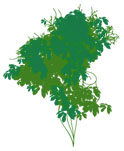Ecovillage Activists in Japan
By Diana Leafe Christian



The Japanese audience was singing along with ecovillager Giovanni Ciarlo—in Spanish! It was the second International Ecovillage Conference, held in Tokyo in November 2007. The packed crowd included environmental activists, progressive university professors and students, and Japan’s “green press.” Speakers included professors of architecture and engineering, innovative housing developers, environmental activists with special projects in rural areas of Japan, and three overseas guests—Giovanni, Penny Velasco, and me.
The conference was a wonderful opportunity for the three of us to learn about Japanese culture. We were told that people in Japan once had a powerfully developed sense of community and connection to neighbors, in thousands of rural villages as well as in city neighborhoods. They also had an ancient, sacred sense of connection to nature, especially trees and forests. But nowadays most Japanese in urban areas live in tiny apartments in concrete high-rises, with little connection to neighbors or nature. Land is so expensive that few apartments include gardens or landscaping. So the Japanese projects presented at the conference, while not “ecovillages” perse, were nevertheless inspiring to the audience because they made the connection with neighbors and nature once again.

They were inspiring to us overseas guests, as well—we enjoyed learning about Japanese colleagues doing projects similar to our own. For instance, Ikuko Koyabe, architect and Professor at Japan Women’s University, presented case studies of what the Japanese call “collective housing”—what we would call cohousing. She described projects in Sweden, Denmark, and the US, and then introduced us to the Kankanmori cohousing project in Tokyo.

Housing developer Akinori Sagane spoke of his work supporting the economic revitalization of remote mountain villages by encouraging sustainable forestry practices and a return to using wood as a building material.
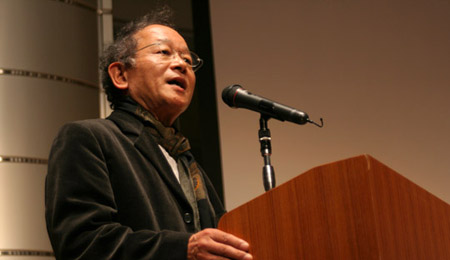
Professor Yasuhiro Endoh of Aichi Sangyo University in Nagano showed slides of U- Court, a successful 22-year-old collective housing development in Kyoto. The project, completed in 1985, consists of 48 units in three buildings, each three to five stories tall. The buildings are arranged around a south-facing U-shaped courtyard containing tall trees and a patio. U-Court doesn’t have a common kitchen or dining room, but in many ways it resembled cohousing. It boasts a shared meeting hall, stairwell entries that face into the courtyard, shared ivy-covered balconies running like outdoor hallways along the courtyard sides of the buildings, and hidden parking in one corner of the property.

Housing developer Tetsuro Kai showed slides of two collective housing projects in Tokyo: Kyodo no Mori and Keyaki House. Each is a concrete multi-story apartment building with rooftop gardens and vine-covered vertical surfaces and balconies. The three-story Kyodo no Mori features passive solar heating and cooling, a rooftop wetlands for greywater recycling, and a solar-powered water pump. It was described as Japan’s first cohousing community in Graham Meltzer’s 2005 book, Sustainable Communities (and in the Winter 2005 issue of Communities magazine). Keyaki House is a five-story building whose residents use the original traditional house on the property as their shared common space and meeting room.
Other presenters described ecovillages in Denmark, a Japanese aid project providing wind generators to communities in East Africa, Camphill Kimberton Hills in the US, and plans to revitalize Japanese villages in the Goshima Islands and the city of Hokkaido-Date.
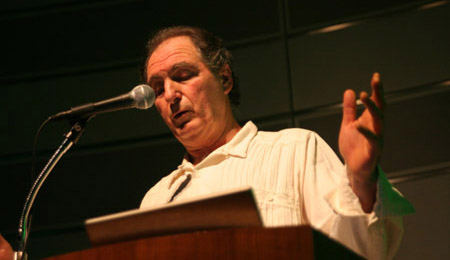
Giovanni, a cofounder of Huehuecoyotl Ecovillage, is Mexico’s representative to the Ecovillage Network of the Americas and a Board member of the Global Ecovillage Network (GEN). His first presentation at the conference was a slide show about successful up-and-running ecovillages in Latin America, including Huehuecoyotl and Las Cañadas in Mexico, Sasardí Nature Reserve in Colombia, and ABRA 144 in Brazil. When he played guitar and sang some of his original songs, he had everyone tapping their feet and moving to the music.
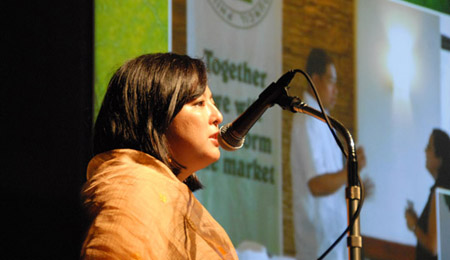
Environmental scholar Penny Velasco is director of GEN-Oceania/Asia in the Philippines and director of Happy Earth, a nonprofit that produces environmental education materials. She showed slides of Pintig Cabiao, the ecovillage she is helping to start in Manila. Pintig Cabiao is being cofounded by three Filipino nonprofits: Happy Earth; the Center for Ecozoic Living and Learning, a Creation spirituality-oriented environmental education center; and the Cabiokid Foundation, a fully developed permaculture demonstration site adjacent to the planned ecovillage site.
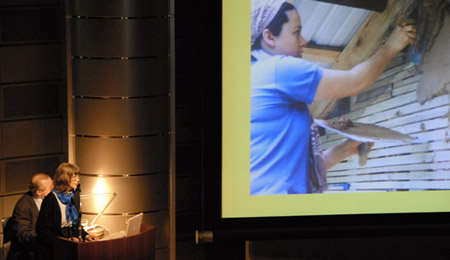
I gave an overview of the concept of ecovillages, with statistics from GEN, quotes from well-known ecovillage activists, and photos of Damanhur in Italy, Tlholego in South Africa, IPEC in Brazil, and Auroville in India. My second presentation focused on ecological and financial sustainability in ecovillages, highlighting Findhorn Foundation in Scotland, Kommune Niederkaufungen in Germany, and Earthaven in North Carolina, where I live.
The conference was hosted by BeGood Cafe and the Permaculture Center of Japan, two nonprofits dedicated to promoting ecological sustainability. Sponsors also included the Tokyo-based Bio City magazine, several Japanese sustainability-oriented companies, and the Japanese Ministries of the Environment and of Land, Infrastructure, and Transport. On-stage hosts were Jun Shikita of BeGood Cafe and Koji Itonaga of the Permaculture Center of Japan and the College of Bioresource Sciences at Nihon University.
Giovanni, Penny, and I grew very fond of the folks at BeGood Cafe, who hosted us royally with Japanese dinners every night. The organization’s founder and director, Jun Shikita, is a former fashion industry executive who started the cafe in 1999 to share and promote practical environmental information. We were also impressed by Akemi Miyauchi, the ever-helpful, untiring coordinator, who took care of everything we needed.
After the conference the BeGood Cafe folks helped us foreign guests visit several Japanese intentional communities—a wonderful treat. Penny traveled to the Konohana Family, a 14-year-old organic farming community near Mt. Fuji. The goal of this vegetarian community, which produces nearly all its own food, is to live in harmony with the Earth and with each other. “You could feel the love among the members there,” Penny later told us.
Giovanni, Akemi, and I visited Kankanmori Cohousing in Tokyo, which is located on the second and third floors of a 12-story apartment building. We were given a tour of the common facilities by the project’s architect and founder, Ms. Hiroko Kimura. Even though we were in a culture quite different from ours, Kankanmori felt familiar—especially its common kitchen and other shared facilities, and our guide’s description of the cooking teams, common laundry use, and interpersonal process in meetings. Giovanni and I told Ms. Kimura that the kinds of topics she described in their meetings came up at Huehuecoyotl and Earthaven as well. Whether in Mexico, Japan, or North Carolina, communitarians seem to face the same kinds of issues.
Akemi and I also briefly visited Tetsuro Kai and his two beautifully designed and landscaped collective housing projects, Kyodo no Mori and Keyaki House.
I believe we in the communities movement can learn much from our Japanese colleagues—architects, developers, professors, and environmental activists like the folks at BeGood Cafe. It was an honor to meet them.
![]()
Diana Leafe Christian, author of Finding Community and Creating a Life Together and former editor of Communities magazine, is editor of the new online ecovillage newsletter, “Ecovillages and Sustainable Communities.” She lives at Earthaven Ecovillage in the US.
![]()
Contact info:
Diana Leafe Christian: dianaleafechristian.org; diana@ic.org
BeGood Cafe: begoodcafe.com/archive-bgc/main/archives/ecvc2007_report (in Japanese, with photos); Contact Form
Giovanni Ciarlo and Huehuecoyotl Ecovillage: huehuecoyotl.net; sircoyote@aol.com
Penny Velasco: happyearth.info; penny@happyearth.info






